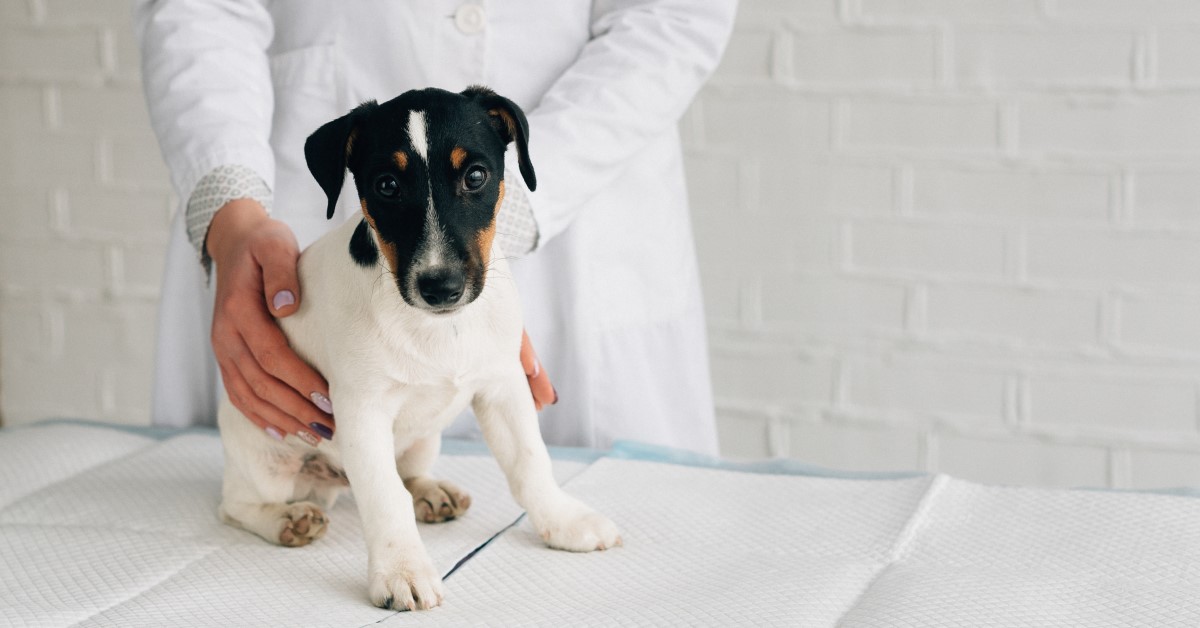Your Dog’s Hip and Joint Health
Preventing hip and joint health issues in dogs requires pet owners to be proactive.

Hip and joint problems can develop at any age but are especially common in older dogs and larger breeds. Our pets rely on their joints to help them walk, run, and play. When hip and joint problems start to develop, your dog may experience pain, stiffness, and mobility issues that make it difficult for them to get around.
Genetics plays a key role in the development of certain joint issues. Saint Bernards, Great Danes, German Shepherds, and Labrador Retrievers are some of the most common breeds to suffer from hip dysplasia and similar conditions. Proper diet and weight control are also important in the prevention and treatment of joint disorders.
Learn more about common hip and joint problems in dogs and how to improve your pet’s joint health.
Common Hip and Joint Problems in Dogs
If your dog is having difficulty standing up, is limping, or experiencing problems with mobility, he may have a hip or joint disorder. Some of the most common hip and joint problems in dogs include:
- Hip Dysplasia – This common canine disease causes a malformation in the hip joint, resulting in uneven rubbing of the cartilage. Symptoms of hip dysplasia include lameness, pain, and early onset of osteoarthritis.
- Osteoarthritis – Limping and hip pain can occur due to osteoarthritis in the hip joint. This inflammatory condition can result in cartilage loss, leading to pain and reduced mobility.
- Osteochondrosis – This disease occurs due to abnormal cartilage growth. It commonly impacts large and giant breed dogs, resulting in swelling and pain. It can also cause osteoarthritis of the joints.
- Legg Calve Perthes Disease – The cause of legg calve perthes disease is not known. This condition is caused by the spontaneous degeneration of the femur head, located at the top of the leg bone which is responsible for hip joint mobility.
- Displacement of the Kneecap – This is a hereditary disorder caused by the abnormal development of the kneecap. Patella displacement can result in cartilage and ligament injuries in the knee.
- Elbow Dysplasia – Dysplasia of the elbow is caused by the abnormal development of the elbow joint in large, young, rapidly growing dogs. With this condition, lameness tends to slowly develop between four and eight months old.
- Septic Arthritis – Septic or infectious arthritis is generally caused by bacteria that spreads through the blood as a result of trauma or surgery. Common signs of septic arthritis include swelling, lameness, fever, stiffness, and joint pain.
- Immune-Mediated Arthritis – This type of arthritis is caused by the body’s own immune system, resulting in the inflammation of joints. Immune-mediated arthritis gradually destroys the joint cartilage and the bone located under the cartilage.
- Cancerous Arthritis – Cancerous arthritis is generally caused by a synovial cell sarcoma, a type of tumor. Some symptoms of this condition include joint swelling and lameness.
Maintaining Your Dog’s Hip and Joint Health
There are many ways that you can help your dog maintain healthy hips and joints, including:
1. Keep Your Dog at a Healthy Weight
Overweight dogs are at an increased risk of developing hip and joint problems, as well as other health conditions like kidney disease, high blood pressure, respiratory disease, diabetes, and some cancers. Feed your dog a balanced diet based on his weight and lifestyle.
2. Promote Physical Activity
While exercising your dog may seem counterproductive when he is dealing with hip and joint issues, physical activity can often be beneficial. Exercise can help strengthen the muscles around the joint; however, it’s important not to overexert your pet as this can cause further wear and tear on the joints.
3. Set Up Pet-Friendly Devices
Dogs can suffer trauma when they do not have the proper devices to safely move around the home. For example, jumping to or from the sofa can put excess stress on the joints, potentially causing damage. Consider using pet-friendly devices in the house to help your pet, such as pet-friendly ramps or stairs that lead to the sofa or bed.
4. Massage Painful Joints
Painful or stiff joints can make it difficult for your pet to walk and play. You can give your pet some relief from their discomfort by gently massaging their joints. Ask your vet for recommendations about the best techniques that your pet may find relaxing. Avoid putting too much pressure on inflamed joints as this can cause your pet pain.
5. Give Your Pet Supplements
There are a variety of supplements on the market designed to support good hip and joint health in dogs. Chondroitin and glucosamine supplements have been found to build strong cartilage and maintain synovial fluid in joints. A proper amount of synovial fluid is essential to cushion and lubricate the joints.
6. Increase Omega-3s in Diet
Omega-3 fatty acids have been found to reduce joint tenderness and stiffness in pets. They also help support joint lubrication, making it easier for your pet to get around. There are many natural foods that contain high amounts of omega-3s, such as salmon, anchovies, linseed, chia seeds, soybeans, and sardines.
Speak with Your Vet
Even dogs with hereditary hip and joint issues can live comfortably for many years with proper care and support. If you are concerned about your dog’s hip and joint health, speak with your vet about how you can improve your dog’s quality of life.
Ready to start saving money on pet wellness care?
Then take a look at Mint Wellness, the pet wellness plan that provides fast reimbursement on routine pet care. Save on vaccinations, wellness exams, preventatives, dental, and more!
Learn More


